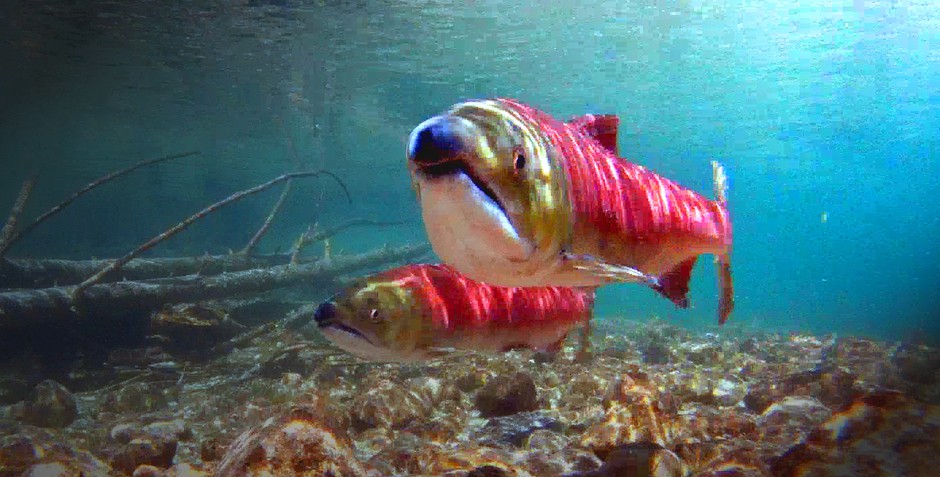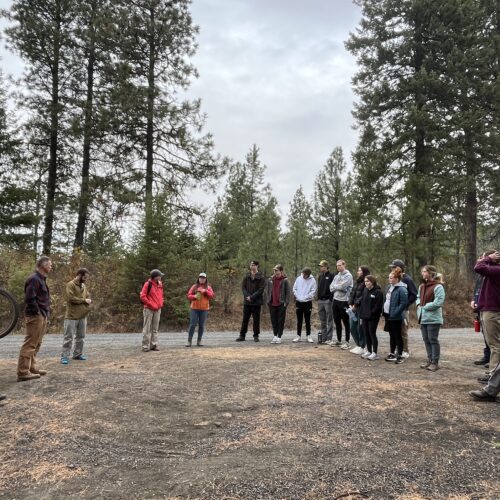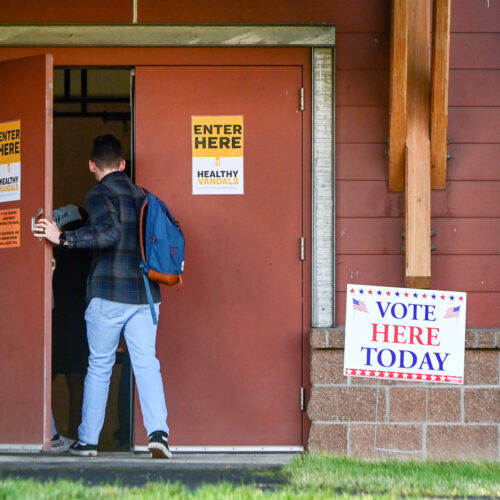
Biden calls for ‘abundant’ salmon populations, directs agencies to honor tribal treaty rights
Listen
(Runtime 1:05)
Read
By Courtney Flatt and Tony Schick
President Biden today directed federal agencies to restore healthy and abundant wild salmon populations to the Columbia River Basin. The presidential memorandum also called for tribal treaty and trust obligations to be honored.
Tribal and conservation groups applauded the move, calling the memorandum “incredibly historic.”
“The president is also sending a clear message throughout the entire federal government and all the federal agencies that business as usual is no longer acceptable,” said Aja DeCoteau, the executive director of the Columbia River Inter-Tribal Fish Commission.
Four tribal nations – the Nez Perce Tribe, the Confederated Tribes and Bands of the Yakama Indian Nation, the Confederated Tribes of the Warm Springs Reservation of Oregon and the Confederated Tribes of the Umatilla Indian Reservation – entered into treaties with the United States government in 1855.
That reserved the right for tribal members to fish in all usual and accustomed places. Since dams were built in the Columbia Basin, salmon and steelhead populations have become threatened or endangered.
“For us, if we don’t have a fish in the river, basically we don’t have that treaty right, and it’s the government’s fault for not ensuring that we do,” DeCoteau said.
Now, Biden has called for a “sustained national effort” to restore wild fish populations. The memorandum calls for tribally led conservation efforts.
“The Biden-Harris administration is committed to honoring and respecting Tribal sovereignty, protecting Tribal homelands, and incorporating Indigenous Knowledge and robust Tribal consultation into planning and decision-making,” according to a fact-sheet released by the administration.
The federal government, environmental groups and tribes have been involved in a decades-long legal challenge over hydropower operations. That litigation has been on hold for nearly two years because the federal government agreed to figure out a solution – that pause ends Oct. 31.
In the memorandum, Biden gave federal agencies 220 days to review budgets and plans to help restore fish.
The memorandum didn’t provide specifics on how agencies should update plans to restore fish runs, but one contentious debate has been over the fate of four dams on the lower Snake River.
Salmon advocates say the dams need to be removed or altered – and their services should be replaced. People advocating to keep the dams in place say they provide key benefits to the region – and say fish and dams can coexist.
U.S. Rep. Dan Newhouse, R-Wash., has led efforts to keep the lower Snake River dams in place.
“While there may not be explicit recommendations to breach the Lower Snake River Dams in this memorandum, that is the goal of this administration,” Newhouse said in a statement.
In a separate statement, U.S. Sen. Patty Murray, D-Wash., said the administration was “working from every angle to restore fish populations in the Columbia River Basin.”
“I’m going to fight for the strongest possible investments to save our salmon,” Murray said.
Last week, the Biden administration also committed millions to bring salmon back to the Upper Columbia River, where dams have blocked fish for nearly a century. The administration announced $8 million in funding through the Department of Interior’s Bureau of Reclamation and $200 million over 20 years through the Bonneville Power Administration.
The latest memorandum also calls for the region to continue delivering carbon-free energy, invest in local communities and support agriculture that depends on the dams. Supporters of the dams say not much has changed with this announcement.
“(The memorandum) doesn’t address the conflict. It doesn’t solve the problem that we’re facing as a region,” said Kurt Miller, executive director of Northwest RiverPartners, a group that supports keeping the lower Snake River dams in place. “I don’t think it changes much. I think we’re already trying to balance those needs.”
However, salmon advocates argued this memorandum is a step toward solutions that could bring lots of investment into the region – a step that’s never been taken before, said Collin O’Mara, president and CEO of the National Wildlife Federation.
“Having the clarity of saying: It’s not a question of whether we’re going to do this, it’s a question of how we’re going to best do this – and have a much more thoughtful solutions-oriented conversation,” O’Mara said.















